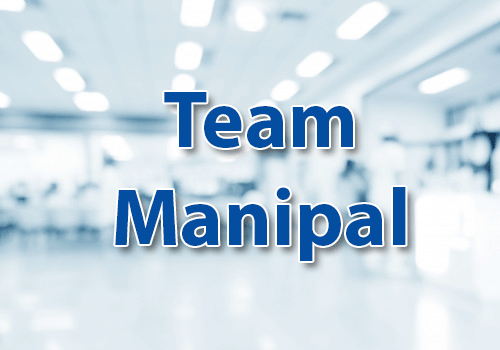
Listen to article
Loading audio...
Epilepsy is a chronic neurological disorder which causes recurrent, unprovoked seizures, which are sudden bursts of electrical activity in the brain. It occurs when the brain sends out the wrong signals to the body. These seizures cause a temporary disturbance in the communication between the brain cells. The severity of seizures depends on the individual. The exact cause of the seizures is unknown, although it can be triggered due to brain injury, stroke, brain tumour, and alcohol and drug abuse. Mild seizure usually lasts a few seconds during which a person experiences a lack of awareness, while stronger seizures can last for a few minutes and can cause spasms, uncontrollable muscle twitches, or in extreme cases, even loss of consciousness.
Causes of Epilepsy
A seizure indicates that a part of the brain is not functioning normally. It can be due to many reasons such as infections of the brain, injuries to the brain, birth injuries to the brain, tumours, blood clots etc. In some cases, the doctors might be unable to detect the cause of the seizures. In very rare cases, the seizures may also be due to genetic factors. The other known causes of epilepsy are:
- Serious illness or high fever
- Stroke
- Lack of oxygen to the brain
- Dementia or Alzheimer’s disease
- Brain tumours
- Maternal drug use, prenatal injury, brain malformation
- Lack of sleep
- Substance abuse
- Excessive consumption of alcohol
- Other vascular diseases.
Types of Epileptic Seizures and Their Symptoms
Seizures and epilepsy are of two basic types:
Focal or Partial Epilepsy and Generalized Epilepsy. When the seizure involves an electrical abnormality in a part of the brain, it is called focal or partial epilepsy and the term applies to epilepsy as well. When it involves the entire brain right from the beginning, it is referred to as a generalised seizure or epilepsy. Sometimes, the seizures may not cause any symptoms, and these are known as subclinical seizures.
The symptoms of epilepsy vary according to the type of seizure:
-
Focal (Partial) Seizures
In a partial seizure, the epileptic activity takes place in just a part of the patient’s brain. The seizures are usually named according to the area of the brain in which they originate, for example, focal frontal lobe seizures. There are two types of partial seizures:
-
Simple Partial Seizure:
It doesn’t involve a loss of consciousness. The symptoms are:
- Dizziness
- Twitching of limbs
- Alterations to a sense of smell, taste, sight, hearing and/or touch
- Sudden, unexplainable feelings of joy, anger, sadness or nausea.
-
Complex Partial Seizures:
In this type of partial seizure, the patient may lose consciousness or the sense of awareness and have a dreamlike experience The symptoms are:
- Staring blankly
- Unresponsiveness
- Repetitive movements like blinking, twitching etc. known as automatisms.
-
Generalised Seizures
It occurs when both the hemispheres of the brain have an epileptic activity. It is a result of abnormal neural activity in both halves of the brain. A person loses consciousness during the seizure. There are six types of generalized seizures:
- Absence Seizures: These involve short lapses in consciousness which causes a blank stare during the seizures. It may also cause repetitive movements like lip smacking or blinking. Absence seizures often respond well to treatment.
- Tonic Seizures: They cause a loss of consciousness, muscle stiffness, usually in the back, legs and arms, and shaking.
- Atonic Seizures: It causes a loss of muscle control and can make a person fall suddenly.
- Clonic Seizures: These are associated with rhythmic, jerking movements.
- Myoclonic Seizures: These cause spontaneous quick twitching of the arms and legs.
- Tonic-clonic Seizures: These are the best-known types of generalized seizures. The symptoms include body stiffness, shaking, loss of bladder or bowel control, tongue biting and loss of consciousness.
Do’s and Don’ts during Seizures
During a seizure, the immediate priority is the safety of the patient. The patient must be made to lie horizontally on one side. This causes any secretions of the mouth to come out and prevents suffocation. Patients often jerk violently during seizures. In such cases, the patient must be supported on one side, either the right or the left, and it should be ensured that he/she does not strike against any furniture or the walls which may result in an injury. No attempt should be made to try and forcibly restrain the jerking, as this may result in injuries to the patient, tears in the muscles or ligaments or even dislocations of the joints. No attempt should be made to prevent a person from biting the tongue during a seizure, even if results in bleeding. Trying to do so by inserting fingers, cloth or spoon between the teeth, or trying to pry open the mouth leads to injury of the teeth, gums, and jaws, or may even end up suffocating the patient. During a seizure, nothing should be given to the patient by mouth, such as water, juice, sugar etc. This is because, during and after a seizure, the patient is unable to swallow properly and the food particles may end up in the throat or the lungs, resulting in respiratory infections.
Precautions for patients during Epilepsy
Sleep is the first line of defence against seizures and epilepsy, so a person must get adequate sleep of about -8 hours regularly. Patients must also take their meals regularly. They should never miss their medicines. Each medicine has a specific duration of action beyond which the protection diminishes, so all medicines need to be taken at regular intervals. Alcohol must be avoided as it can trigger seizures.
Seizures are unpredictable and they may occur even while on treatment. Therefore, a person should be well aware of his/her surroundings from the safety aspect and not indulge in any activity wherein a seizure may result in a grievous injury. As per Indian laws, any person with epilepsy or seizure is prohibited from driving and their license will be suspended once a diagnosis of seizure or epilepsy has been confirmed.
Diagnosis and Treatment of Epilepsy
There are many tests to determine whether a person has epilepsy and the kind of seizures he/she is experiencing. The tests to be conducted depend on the medical history and symptoms of the patient. Blood tests may be conducted to detect for signs of infectious diseases, liver and kidney function and blood glucose levels.
- EEG Monitoring: This is the most common test used in diagnosing epilepsy. It is a non-invasive, painless test which can detect abnormalities in the brain’s electrical activity.
- CT Scans, Magnetic Resonance Imaging (MRI), Positron Emission Tomography (PET) and other imaging tests can reveal tumours and other abnormalities that can cause seizures.
Treatment options for epilepsy are:
- Medications:
Anti-epileptic drugs can reduce the number of seizures and may also help in eliminating them. The choice of the medicine depends on the age of the patient, gender, reproductive status, pregnancy, type of seizure, medical history and other medicines that he/she might be taking. All the medicines are designed for long-term use, running into several years. They are tried and tested and have predictable side effects like nausea, irritability, headaches, depression, loss of hair, weight gain etc. Generally, the side effects are quite mild and can be handled well with minor adjustments in the dosage.
- Brain Surgery:
In brain surgery, the area of the brain that causes seizure activity can be removed or altered.
- Vagus Nerve Stimulator
This is a device surgically placed under the skin on the chest which electrically stimulates the nerve running through the neck. This can help prevent the seizures.
- A ketogenic diet, which is a high-fat, low-carbohydrate diet, can help control seizures.
Recurrent unprovoked seizures always require treatment. But sometimes, a single seizure may not be treated if all the test results like MRI and EEG are normal. But some factors such as the patient’s lifestyle, occupation etc. also need to be considered. If the doctor feels that a second seizure could pose a major hazard to the patient, medications might be initiated right after the first seizure. In children, common seizures that occur with fever, called simple febrile seizures are generally not treated. Cases of epilepsy need to be handled with care. Although no cure exists for this condition at present, the right treatment can result in a dramatic improvement in the patient’s condition and quality of life.




















 2 Min Read
2 Min Read












